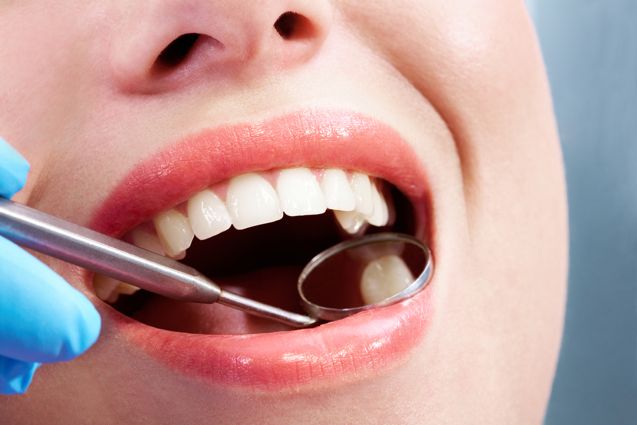Simply put, cavities are holes on your pearly whites brought about by tooth decay or dental carries. Contrary to popular belief, children are not the only ones at risk of having cavities. Even adults may suffer from it too, most especially due to poor oral hygiene, gum disease and the process of aging.
Cavities take place when the enamel — the hard, white substance covering the tooth — is weakened or dissolved, ultimately ending up as holes. The real problem begins when the holes are deep enough to reach the dentin, the inner layer of the tooth. This is when the usual sign and symptom of cavities show up — tooth decay and toothache.
Although it’s true that the enamel is a very strong material, it’s not really impervious to getting damaged. Softening or erosion of the enamel begins when you consume foods that are packed with carbohydrates and sugar and you fail to clean the mouth right away. The action of bacteria on carbohydrates and sugar creates acid that weakens or dissolves the enamel. The damage tends to get bigger and bigger until cavities develop.
Because kids are naturally drawn to the consumption of sweets and they do not know yet the value of having good oral hygiene, they are at high risk of developing cavities and ultimately tooth decay. However, just like what’s mentioned earlier, adults may suffer from cavities too. Gum disease as well as aging may cause the gums to recede, thus making the teeth more susceptible to various problems such as cavities.
How to Keep Cavities at Bay
Good oral hygiene can save your pearly whites from having cavities. Although cavities may be easily solved with a simple trip to the dentist’s clinic, nothing can beat preventing them from happening. These are some ways to ward off cavities:
- Brush your teeth at least twice a day. It’s a good idea to use toothpaste with fluoride, a mineral that helps strengthen the enamel. Brushing your teeth is your simplest first defense against cavities and eventually tooth decay.
- Use a good mouth rinse. If brushing the teeth isn’t possible after meals, use a mouth rinse that’s clinically proven to kill off oral bacteria and reduce plaque effectively.
- Chew sugarless gum. Doing this increases the production and flow of saliva in your mouth, helping to wash off bacteria and small particles of food sitting on the enamel.
- Floss daily. Brushing may fail to remove food particles stuck between the teeth which may cause cavities upon the action of bacteria on them. This is when the importance of flossing everyday steps into the scene.
- Have a healthy diet. Refrain from consuming foods that are laden with carbohydrates and sugar and failing to clean your mouth immediately after. Include calcium- and vitamin D-rich foods in your everyday diet as these nutrients help strengthen your choppers and keep cavities at bay. Some excellent sources of calcium include low-fat milk, cheese, yogurt, almonds, dark green leafy vegetables and canned fish with the bones intact. Oily fish, beef liver and egg yolks are great sources of vitamin D, as well as food products that are vitamin D-fortified such as cereals, orange juice and soy milk.
- Visit your dentist regularly. Stepping foot in the office of your trusted dentist at least once a year for cleanings and routine check ups helps in warding off cavities and tooth decay.
Home Remedies for Cavities
When the symptoms of cavities strike, there are a handful of home remedies you may try in order to attain relief. Some of the most effective ones include:
- In a glass of warm water, dissolve a tablespoon of rock salt. Gargle with it up to 3 times a day for cavity pain relief.
- Because of its antibacterial, pain-killing and anti-inflammatory properties, clove is a wonderful remedy for cavities. Munch on a whole clove to extract the oil and leave it in your mouth for a few minutes. You may also mix 2 to 3 drops of clove oil with 1/4 teaspoon of olive oil and apply the resulting solution on the problem area using a cotton swab.
- Known for its potent antibacterial and antibiotic properties, rubbing a clove of garlic on the cavity may help provide relief. You may also come up with a powerful pain-killing paste by crushing 3 to 4 cloves of peeled garlic and mixing it with 1/4 teaspoon of rock salt. Apply and leave the paste on the cavity for about 10 minutes before rinsing off.
- The simple application of turmeric on the cavity and aching tooth lets you enjoy relief, thanks to its antibacterial and anti-inflammatory properties.












